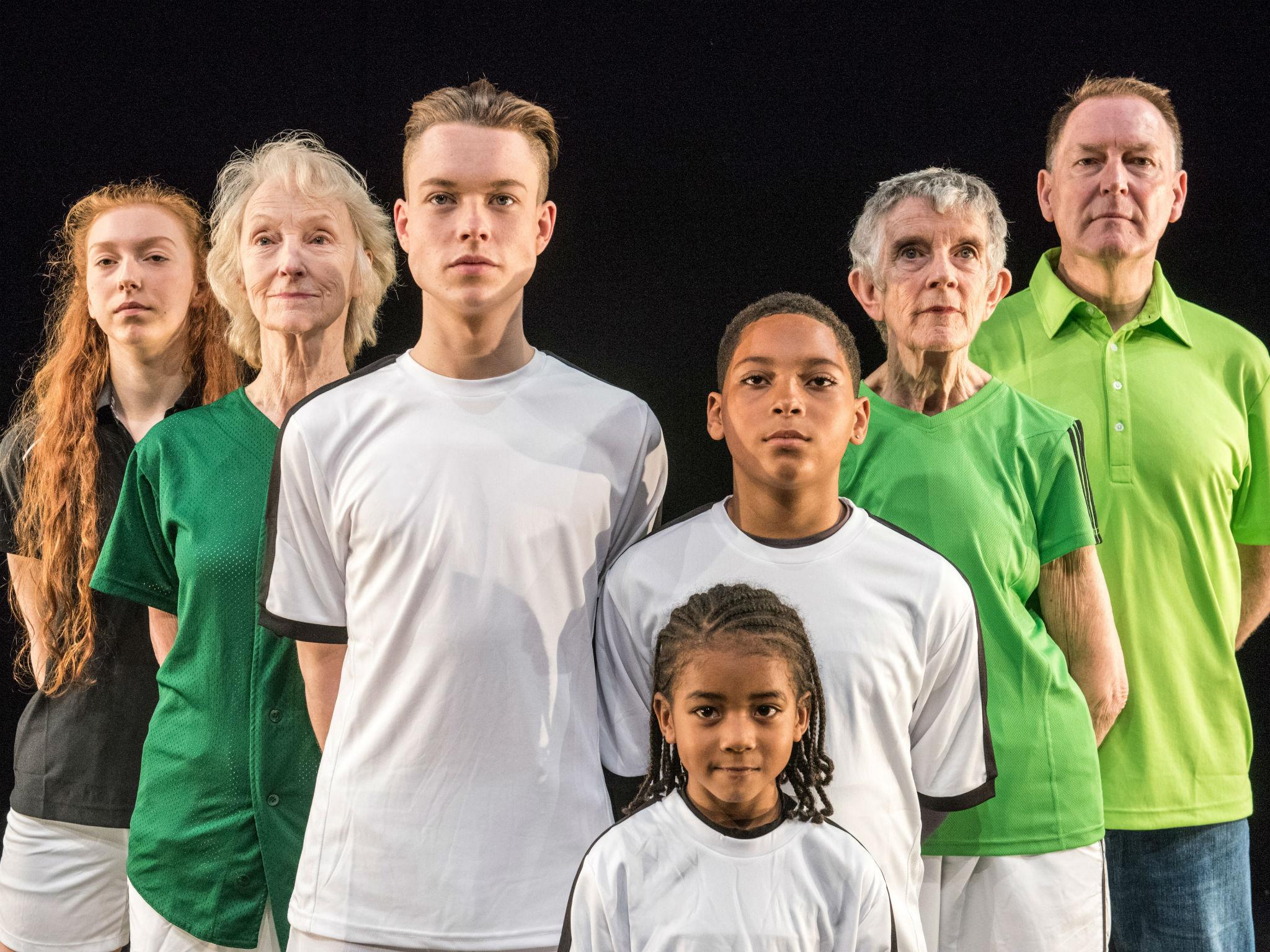Home Turf, Sadler’s Wells, London, review: When football and dance come together
Every year, Sadler’s Wells stages a large-scale show with non-professional dancers. This year, the show brings together a huge cast – and a potential clash of cultures, with an unlikely fusion of dance and football

Your support helps us to tell the story
From reproductive rights to climate change to Big Tech, The Independent is on the ground when the story is developing. Whether it's investigating the financials of Elon Musk's pro-Trump PAC or producing our latest documentary, 'The A Word', which shines a light on the American women fighting for reproductive rights, we know how important it is to parse out the facts from the messaging.
At such a critical moment in US history, we need reporters on the ground. Your donation allows us to keep sending journalists to speak to both sides of the story.
The Independent is trusted by Americans across the entire political spectrum. And unlike many other quality news outlets, we choose not to lock Americans out of our reporting and analysis with paywalls. We believe quality journalism should be available to everyone, paid for by those who can afford it.
Your support makes all the difference.Home Turf, a collaboration between London dance house Sadler’s Wells and the West Ham United Foundation, brings together a huge cast and a potential clash of cultures. Bringing together dance and football, it aims at the overlap of physicality and passionate fandom.
Every year, Sadler’s Wells stages a large-scale show with non-professional dancers. For Home Turf, the 93-strong cast ranges from alumni of the National Youth Dance company to first-time dancers, from children to the theatre’s Company of Elders (one of whom saw Pele score the winning goals of the 1958 World Cup, and is clearly still delighted by the memory). It’s a big, inclusive group, with a range of abilities and disabilities. By collaborating with West Ham United, the theatre builds links with communities near its newest venue, which will open in East London in five years’s time.
Several of the eight choreographers involved admit that they weren’t into football, trying to find other ways into the subject. The opening sections, which bring on the huge cast and lay out the theme, sometimes feel dutiful.
The show becomes more inventive, and more fun, when it comes in at a tangent. In one sequence, dancers shout out the names of football formations – four, four, two and more. The group sprint into position, moving in blocks and as individuals. Once they’re in place, they take up classic football poses: goal celebrations with shirts over heads, leaping for a header, and a lovely collective injury dive, all clutched limbs and expressions of comic anguish.
Two dancers act as commentators on a dance scene, reporting on the physical impact of contemporary dance moves – pointing out shapes, shifts of weight, the way two dancers mirror each other. It’s a lively scene, though it would have been fun to let the report get honestly technical, as real football commentary will.
The Company of Elders get to stage their own pitch invasion, which turns into an act of shared memory: recollections of afternoons on the terraces, of camaraderie, one shorter woman lifted up on a box, like a child being helped to see over adult shoulders.
Endearingly, though West Ham are the focus, there are a few rogue scarves among the dancers, loyal to their other clubs. Striped plastic bags are turned into balls or football strips. There are satisfying pure dance sequences, too: an acrobatic duet, a hip hop-tinged collective strut for a larger cast.
Murray Gold’s music keeps the hour-long show moving at a brisk pace, while Peter Harrison’s lighting evokes everything from family warmth to stadium floodlighting.
Join our commenting forum
Join thought-provoking conversations, follow other Independent readers and see their replies
Comments